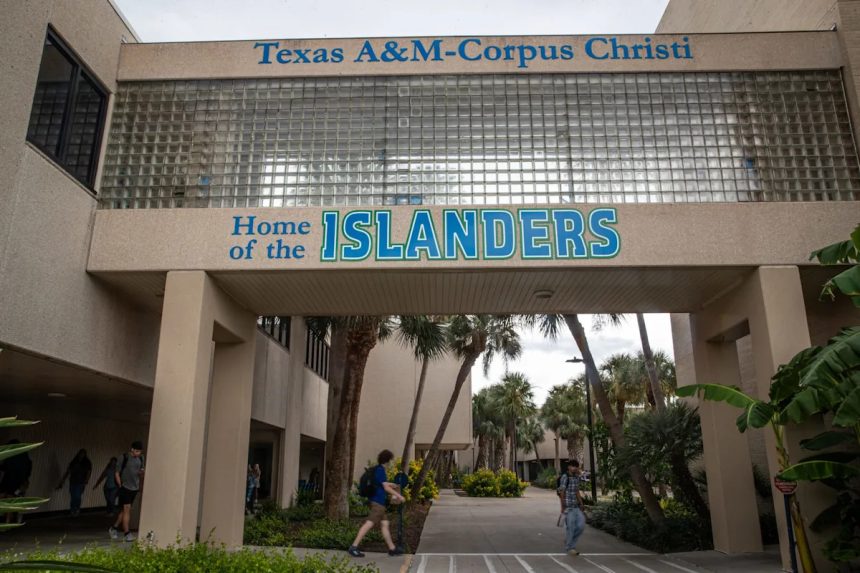Texas A&M University-Corpus Christi President Kelly Miller hopes to expand the research profile of the university.
Miller touted the college’s recent successes and shared data points with donors and community supporters at the university’s State of the University event on Sept. 10.
Here are key takeaways:
University aims to increase research
Over the past five years, the university has increased research dollars, Miller said.
Of the Texas A&M University System campuses, Texas A&M University-Corpus Christi is No. 1 on research spending and federal and National Science Foundation funding, excluding Texas A&M University in College Station.
The university spent close to $51.2 million in fiscal year 2024 on research.
Texas A&M University-Corpus Christi President Kelly Miller speaks during a State of the University event on Sept. 10.
The Carnegie Classification of Institutions of Higher Education designates universities based on their research activity. Texas A&M University-Corpus Christi is currently an “R2” university, which indicates that it has high research spending and awards a high number of doctorate degrees.
But the top tier is R1.
To become an R1 institution, the university would need to spend at least $50 million annually on research and award 70 research doctorates.
Currently, the university has exceeded the R1 spending requirement but must focus on increasing doctorates. It conferred 37 doctorates last year.
Among public R2 non-medical institutions, the Corpus Christi university ranks 18 out of 78.
Texas A&M University-Corpus Christi also aims to become eligible for the Texas University Fund, a state endowment aimed at increasing the number of top research institutions in Texas. To qualify, the university will need at least $20 million in private and federal research dollars and an average of 45 doctorates.
Miller said that by the next state legislative session, Texas A&M University-Corpus Christi plans to meet this goal. It has already met the funding requirement.
“When those dollars come to A&M-Corpus Christi, it puts us in line to be the first Research 1 among the A&M System regionals (universities),” Miller said.
Miller compared the R2 to R1 jump to going from college football to professional football.
“It’s a big jump, and it’s great for a university’s reputation,” Miller said. “But it helps us in so many ways to bring more resources to the Coastal Bend.”
Enrollment growth at A&M-Corpus Christi
Though official counts are still being calculated, the university welcomed at least 11,400 students for the fall 2025 semester.
This represents growth of 5.2% over the past two years, Miller said.
This growth is coming not from local population growth, Miller said, but from recruiting a greater percentage of students to attend college and drawing students from outside the region.
Two years ago, the university launched the “Islanders Finish Initiative” to bring back students who had paused their education to finish their degrees.
Miller shared that 183 students have reenrolled in the past two years. Of those, 61 students have graduated and 14 are on track for a fall 2025 graduation.
Last spring, the college graduated its largest class, with 1,366 students earning degrees.
Of these, 42% were Hispanic, 49% were a minority, 49% were first-generation college students and 54% were economically disadvantaged.
Institute aims to increase Hispanic, South Texas presence in pediatric medical research
Del Mar College deactivates degrees with near-zero enrollments
A&M-Corpus Christi eyes associate degrees for students who can’t finish bachelor’s
These Corpus Christi ISD schools were at the bottom in scores. Here’s how they bounced back
This article originally appeared on Corpus Christi Caller Times: What to know about enrollment growth, research at A&M-Corpus Christi









